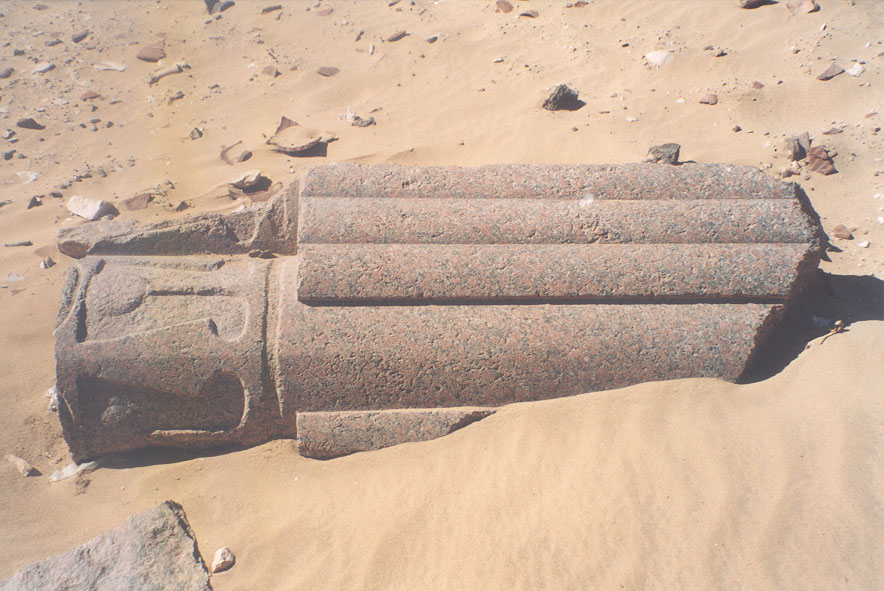Evidence
of Advanced Machining In Ancient
Stephen
S. Mehler, MA
The idea
that some form of advanced machining technique was utilized by the ancient
Egyptians is
one that has been circulating in the literature for well over ten years.
I have presented the concept in my two books, The Land of Osiris (Adventures Unlimited Press, 2001) and From
Light Into Darkness (Adventures Unlimited Press, 2005).
The idea has been popularized and was presented to me in 1996 by
engineer and master craftsman Christopher Dunn and detailed in his landmark
book, The Giza Power Plant (Bear
& Company, 1998).
Over the
intervening years, both Dunn and I have undertaken many trips to
pounders
and hammers. Dunn reported in his
book, and continues to find, examples of multiple contoured angles, perfectly
square corners and smoothly polished surfaces, and tolerances over 1/10,000 of
an inch in the hardest stones known.
In my
first book, I presented the concept that a series of sites known today as
Dahshur, Sakkara, Abusir and Abu Ghurob, Zayiet el Aryan, Giza and Abu Roash
were once interconnected and known as Bu
Wizzer—The Land Of Osiris—and all featured stone masonry pyramids and
temples and were linked together as an ancient power grid constructed over
10,000 years ago. The ancient
stone masonry pyramids were never originally designed and built to be tombs
for kings, or anyone, but as energy devices that utilized flowing water and
solar power from sunlight to produce varied forms of energy for the use of all
people. These ancients whom we
call Khemitians, not Egyptians, but
who were indigenous ancient Africans, employed advanced forms of engineering
and manufacturing to produce the artifacts in stone—and to cut, shape and
lift the thousands of tons of stone that we see remnants of today.
A recent
tour and research trip that I led to
Two
sites that I discuss in detail in my first book are that of Abusir and Abu
Ghurob, located some two kilometers south of
About a
½ mile east of Abut Ghurob is the connected site of Abusir.
There are many amazing artifacts and partial structures still to be
found here. I recently found an
example of two ancient holes drilled into a basalt slab (Fig. 5).
A close-up photo of the bottom hole (Fig. 6) possibly shows spiral
groove marks cut into the stone when it was drilled.
I showed this photo to Chris Dunn and he responded by sending a
close-up hi resolution photo of his own (Fig. 7).
Dunn took this photo of a circular hole found in the granite of the “
Other
evidence we have studied over the years include the famous stone box found in
the King’s Chamber (sic) of the Great Pyramid.
Erroneously labeled as a “sarcophagus,” although no body or
evidence of burial has ever been found in the chamber, the box is made of
On the
At the
site of Sakkara, some 10 kilometers south of
As we
continue to gather and direct an interdisciplinary and holistic research
effort in this area, with varied engineers, physicists, chemists, geologists,
and archaeologists not bound by the outdated and incorrect paradigms of
academic Egyptology, we will be able to present all this evidence that an
advanced indigenous civilization once existed where Egypt is today—a culture
capable of cutting, shaping, lifting and placing in precise geometrical
arrangement, the hardest of stone found on our planet, utilizing highly
sophisticated and technically superior methods and procedures.
I urge anyone interested in this line of research to come to
Figures
for Advanced Machining Article
Fig.
1—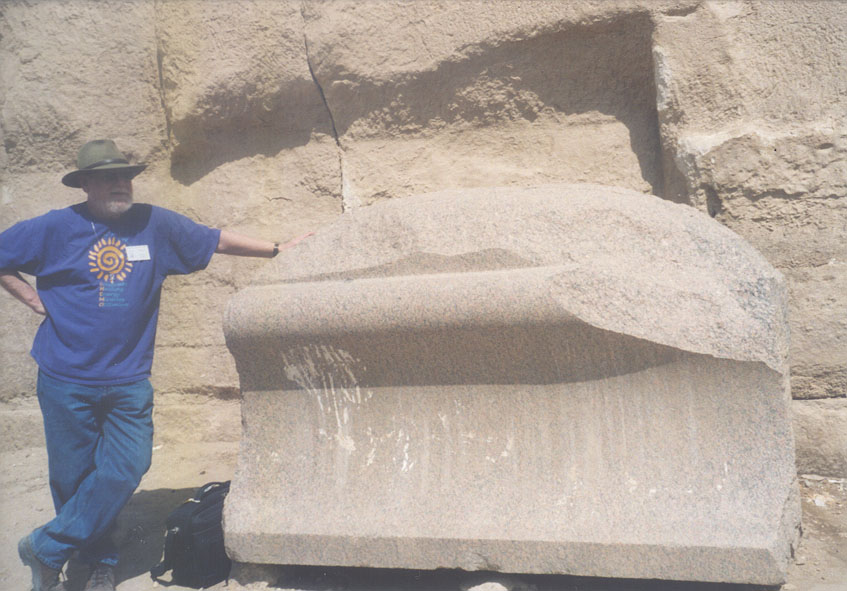
Fig.
2—Abu Ghurob. Altar carved from alabaster.
Photo by author. 1997.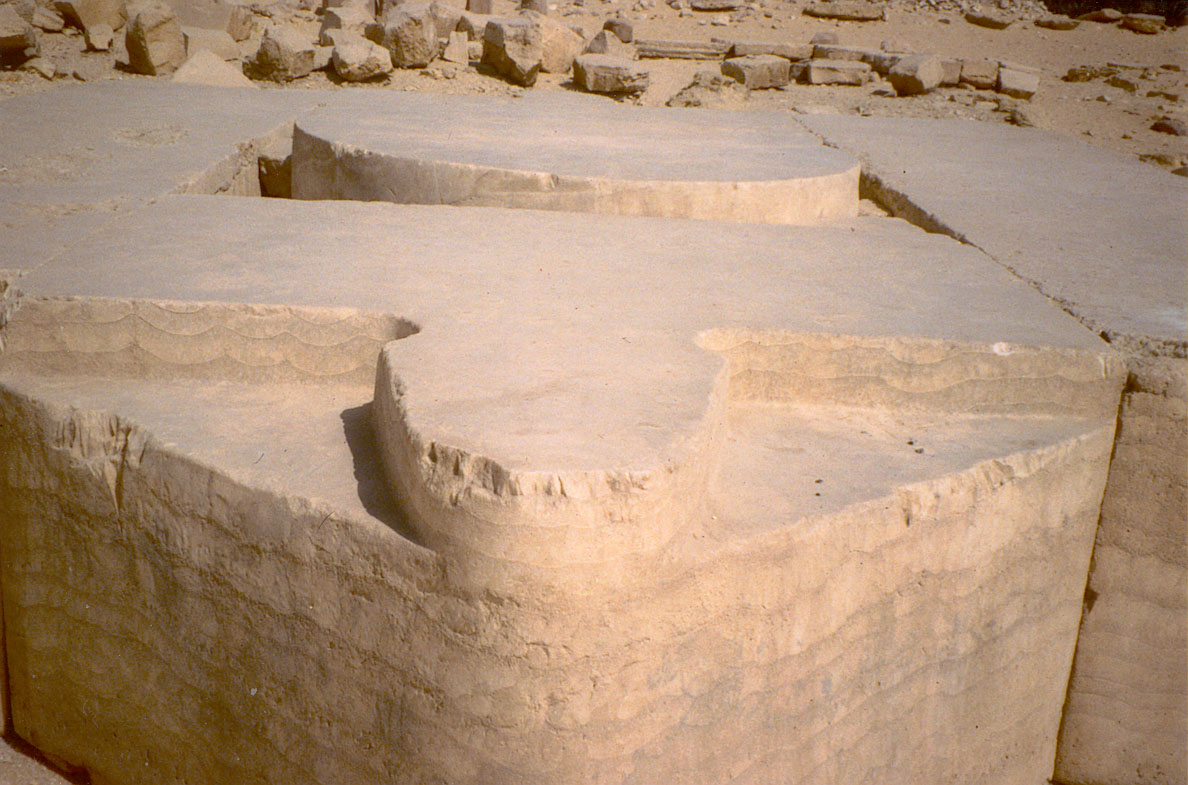
Fig.
3—Abu Ghurob. Alabaster “basin” with round hole drilled through stone.
Photo by author. 2007.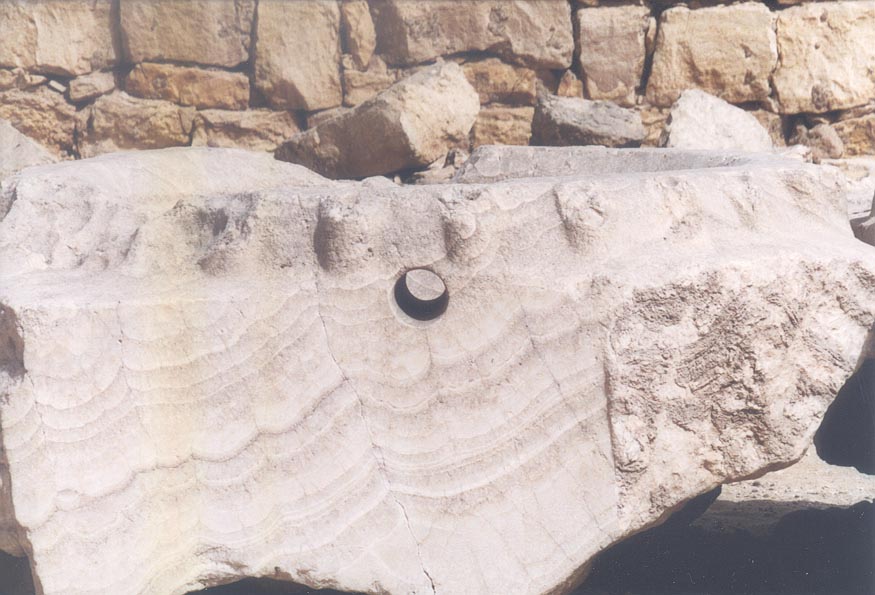
Fig.
4—Abu Ghurob. Two holes drilled
into alabaster stone. Photo by author. 2007.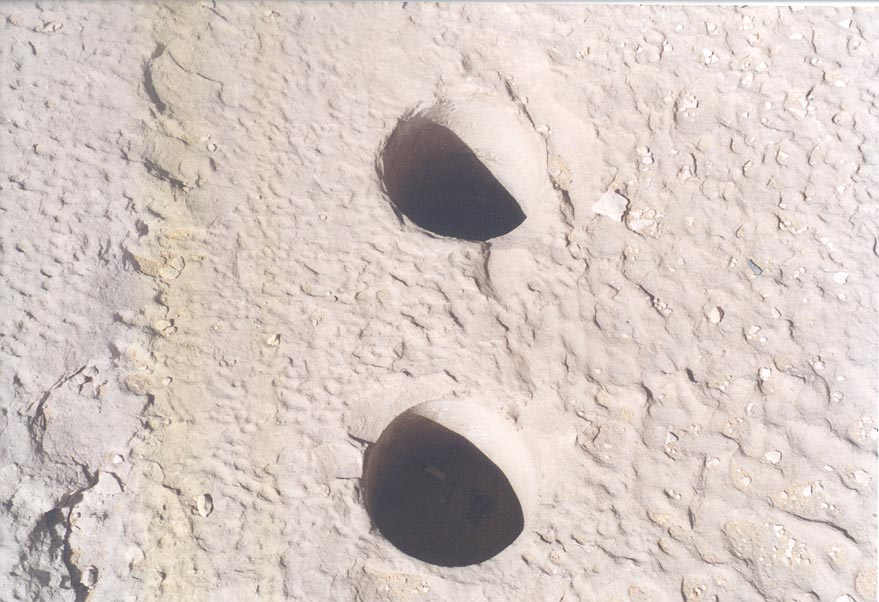
Fig.
5—Abusir. Two holes drilled into
basalt stone. Photo by author.
2007.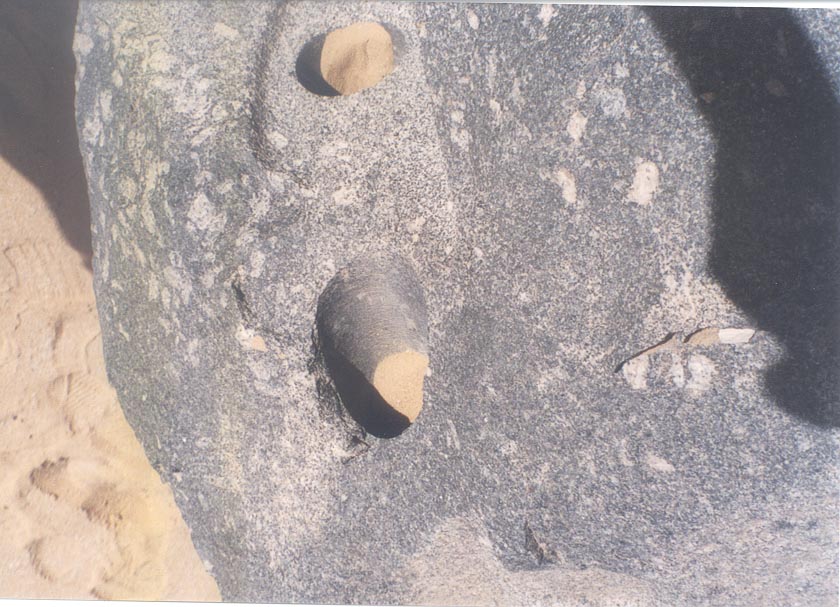
Fig.
6—Abusir. Close-up of drill hole
in basalt with possible spiral grooves. Photo by author. 2007.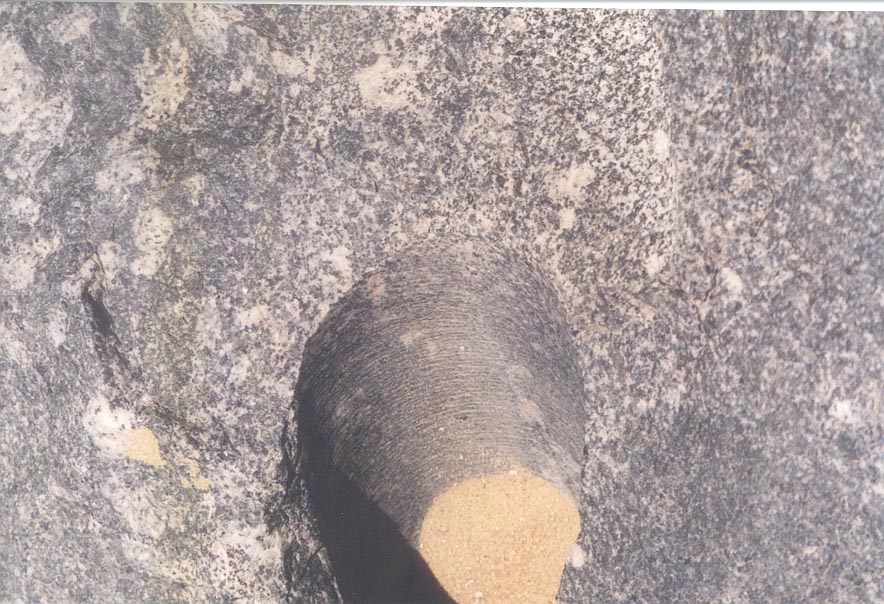
Fig.
7—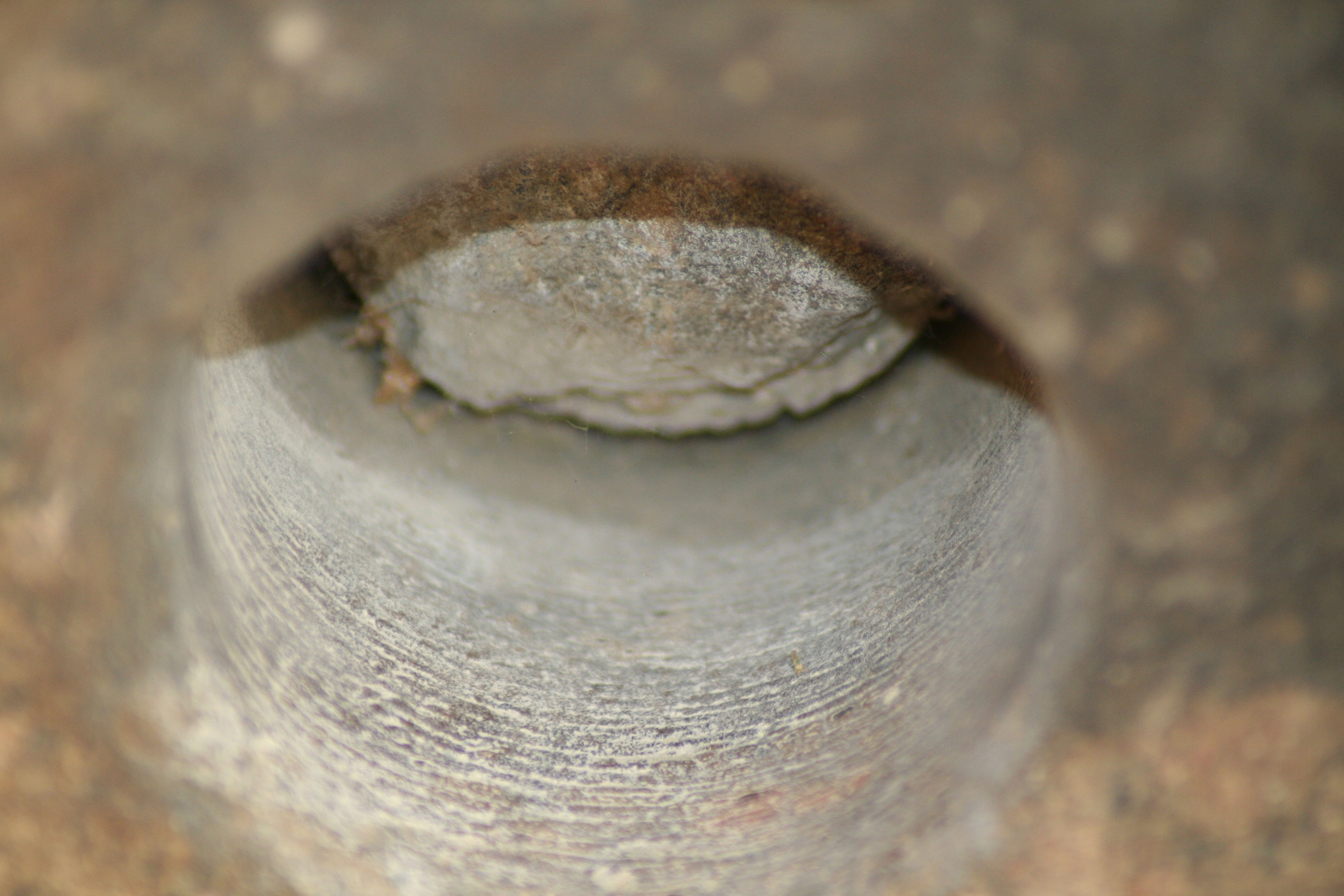
Fig.
8—Abusir, Remnant of granite pillar. Photo
by author. 2007.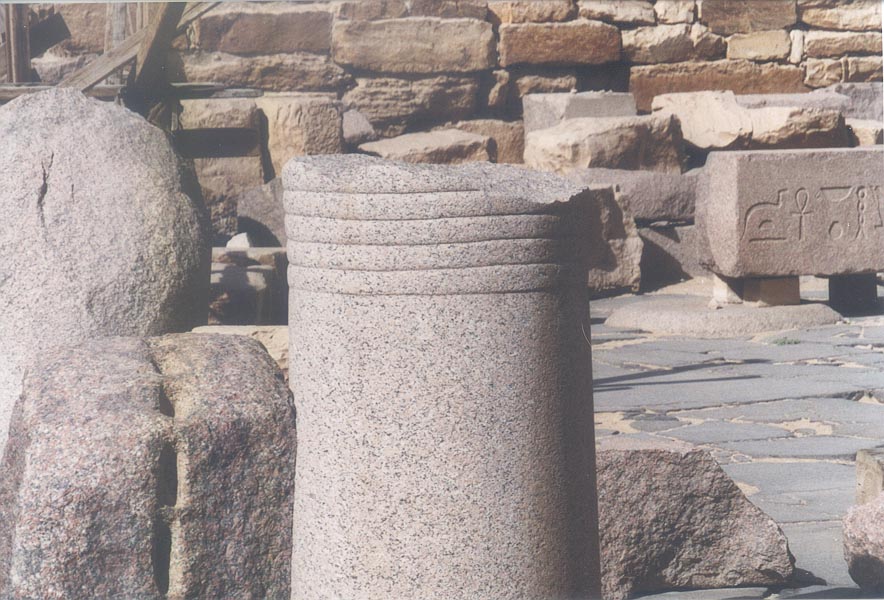
Fig.
9—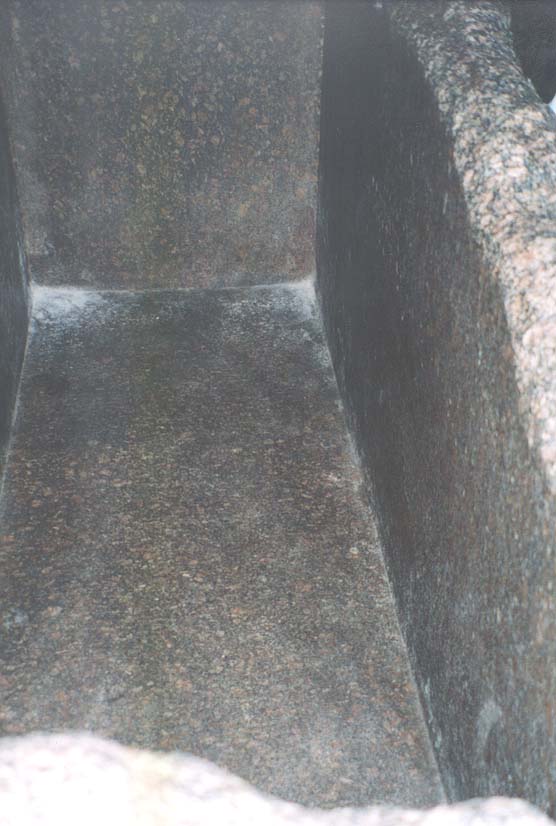
Fig.
10—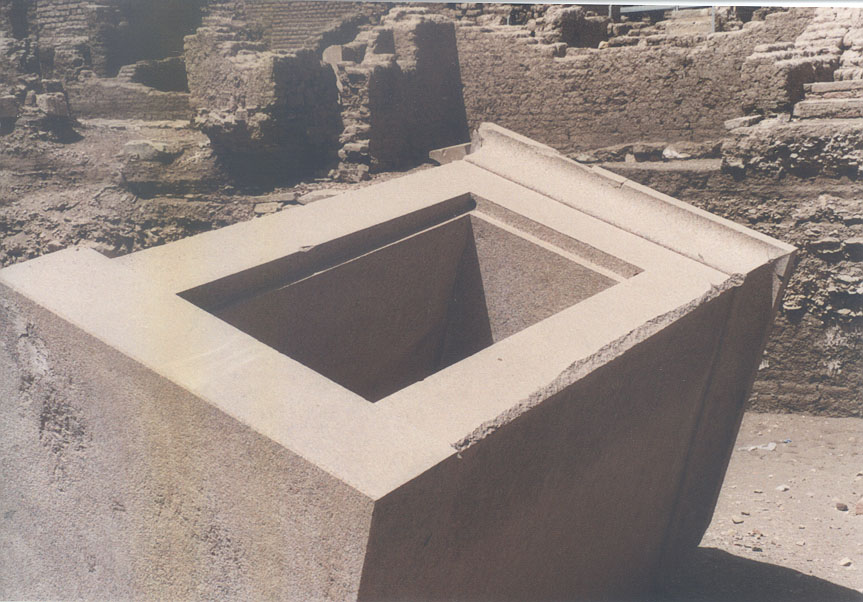
Fig.
11—